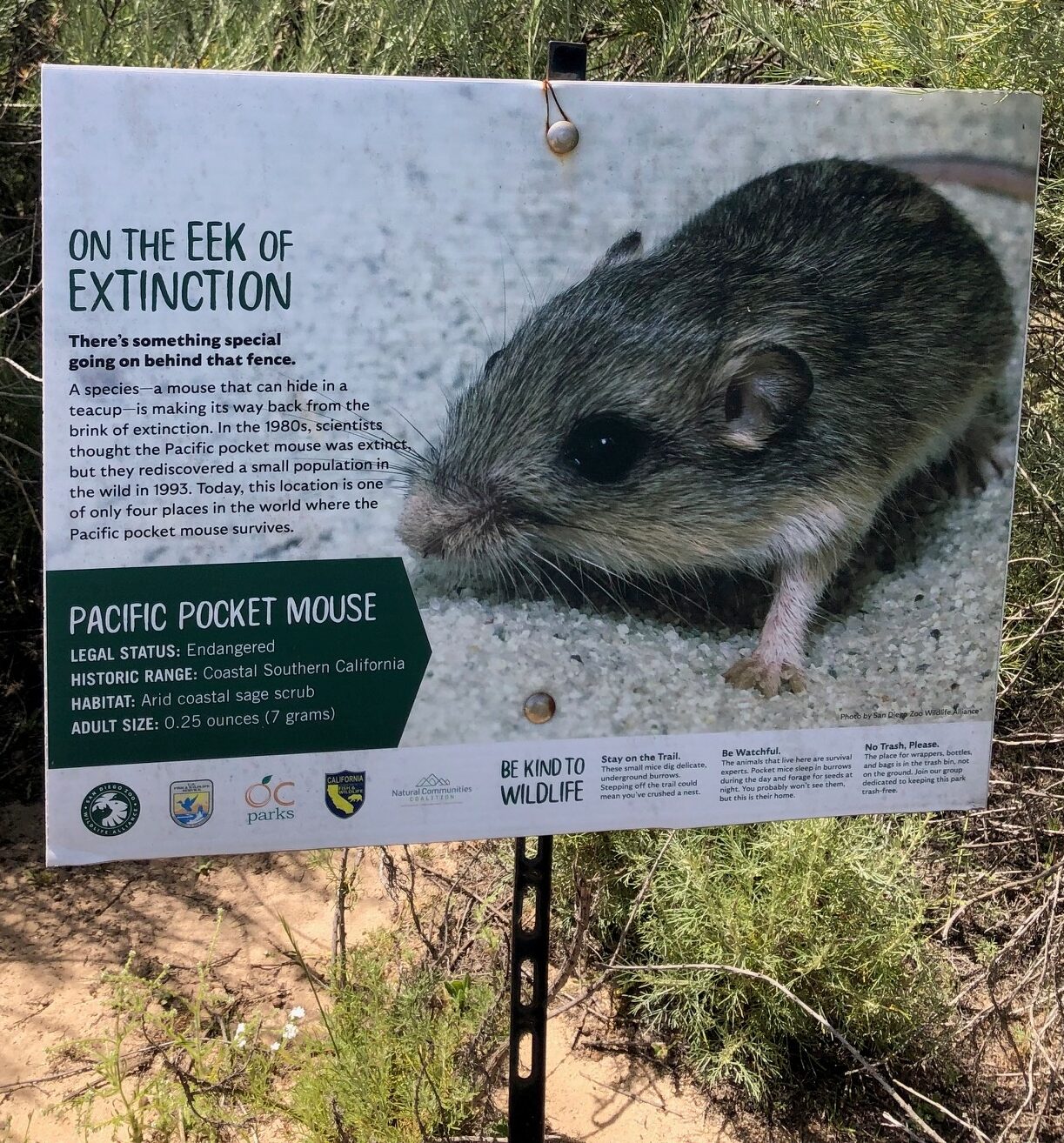
For those following this blog series, you may remember earlier posts I’ve written about a fascinating and important project Zoo New England is supporting – the captive breeding and reintroduction of the now Critically Endangered European hamster. This project is all the more difficult because it takes place in war-torn Ukraine, where Kyiv Zoo staff are working tirelessly while under constant threat to try and halt the extinction of this attractive (trust me!) guinea pig-sized rodent and recover it in the European steppe grasslands.
As part of this support, ZNE received funding from a wonderful foundation called the Trust for Mutual Understanding to provide three Kyiv Zoo staff with a study tour to the San Diego Zoo Wildlife Alliance. This organization is widely considered the leading expert in small mammal captive breeding and reintroduction, and so would be a perfect place for the Ukrainians to learn more about international best practice in the many, many complicated topics that go into such work.
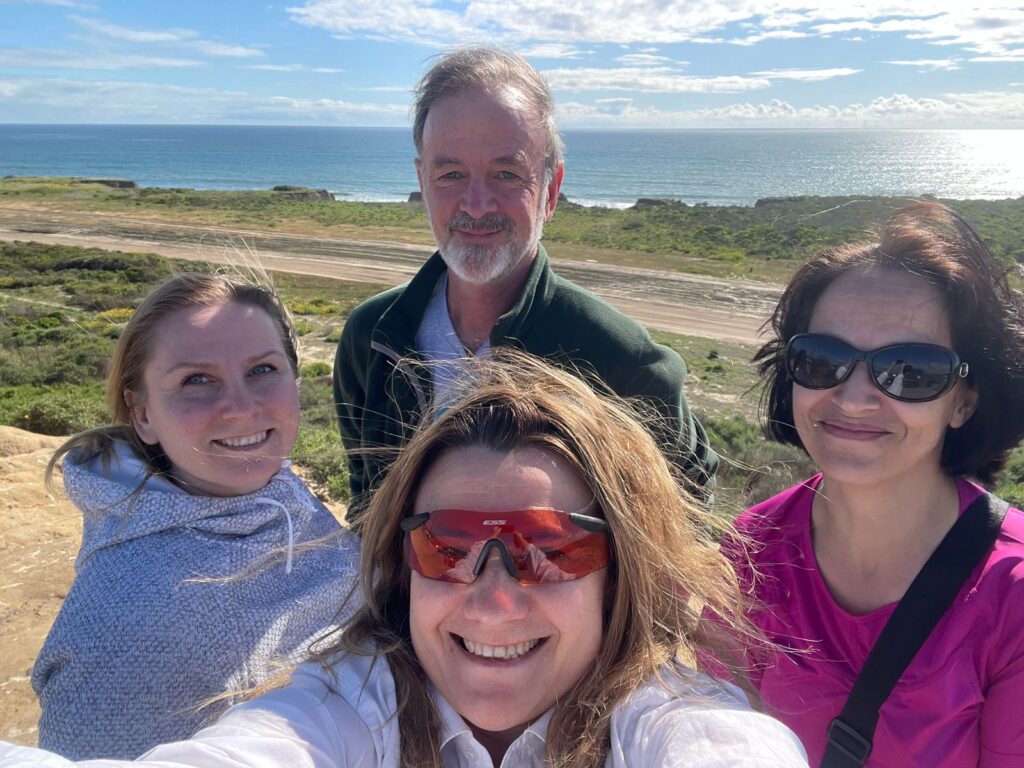
On April 27, I waited anxiously at LAX airport’s international terminal for my Ukrainian colleagues to appear. After a long and increasingly nervous stretch of time, Maria, Maryna, and Olena popped out, exhausted but in fine form. We slogged our way to the rental car site, got a monstrous vehicle for four people and all our luggage, and headed south.
I had wanted to take them down the coast from LA to San Diego as otherwise they would have little opportunity otherwise to explore this region. The drive included classic SoCal traffic jams, lovely coastal towns, and great views of the ocean. We stopped for a while at La Jolla Cove, where our visitors were thrilled by large breeding colonies of brown pelicans and Brandt’s cormorants, along with barking piles of California sea lions, and a large if sluggish group of basking harbor seals. Of course as small mammal enthusiasts they were also completely delighted by the California ground squirrels that are so ubiquitous to this coastline!
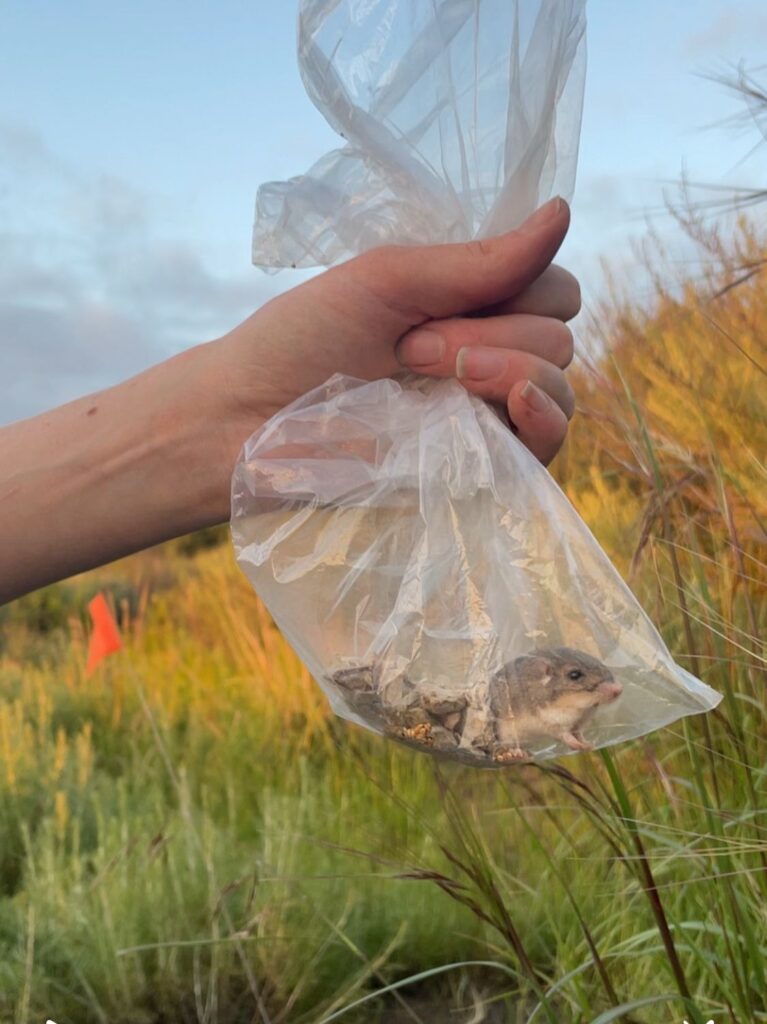
The next day we were met by our very kind host Dr. Debra Shier at the Pacific Pocket Mouse breeding facility near the San Diego Wild Animal Park. Pacific pocket mice, or PPMs as they are called by the staff here, are the smallest rodent in North America, just the tiniest and cutest little creatures you can imagine. We were all given a tour of the breeding facility and shown various methods used to breed and raise these miniscule mice. After a break for dinner we met up again as the staff loaded 50 mice into live traps, and then big containers, and then cars, and then off we caravaned for an hour north to the release site.
The site, which felt very much like the middle of nowhere (despite being surrounded by SoCal suburbia), was in a hilly protected area covered in thick coastal sage scrub. This is a dry, coastal thicket of bushes of various types, most growing waist to chest height. This is critically important habitat for many species, but it has been decimated up and down the coast by development, to the point where many kinds of wildlife that depend on coastal sage scrub are on the edge of extinction. Such is the case with the Pacific pocket mouse, now down to three small and widely separated populations, some with less than 100 animals. (It was actually thought to be extinct until one of the colonies was discovered in the 1990s.)
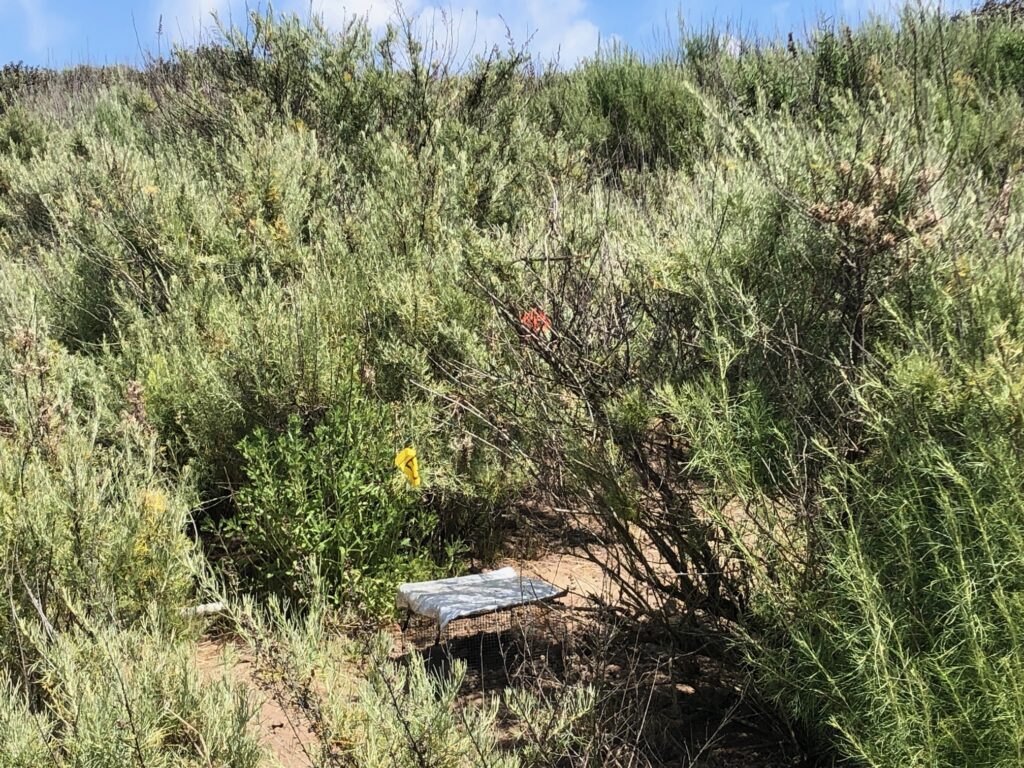
The initial release site was surrounded by a plastic fence to keep out predators such as foxes and competitors such as the much larger but closely related kangaroo rats. The staff had somehow actually built tiny but complex underground burrow systems for each mouse out of cardboard tubing, complete with sleeping chambers and two entrances. The second entrance was now blocked, and the open entrance had a small wire cage sitting over it. We spent the next few hours depositing one tiny mouse into each cage (pocket mice are solitary and a bit grumpy toward each other, so only one mouse per cage), making sure the little critter got down the entrance tube so it knew where its new (temporary) home was.
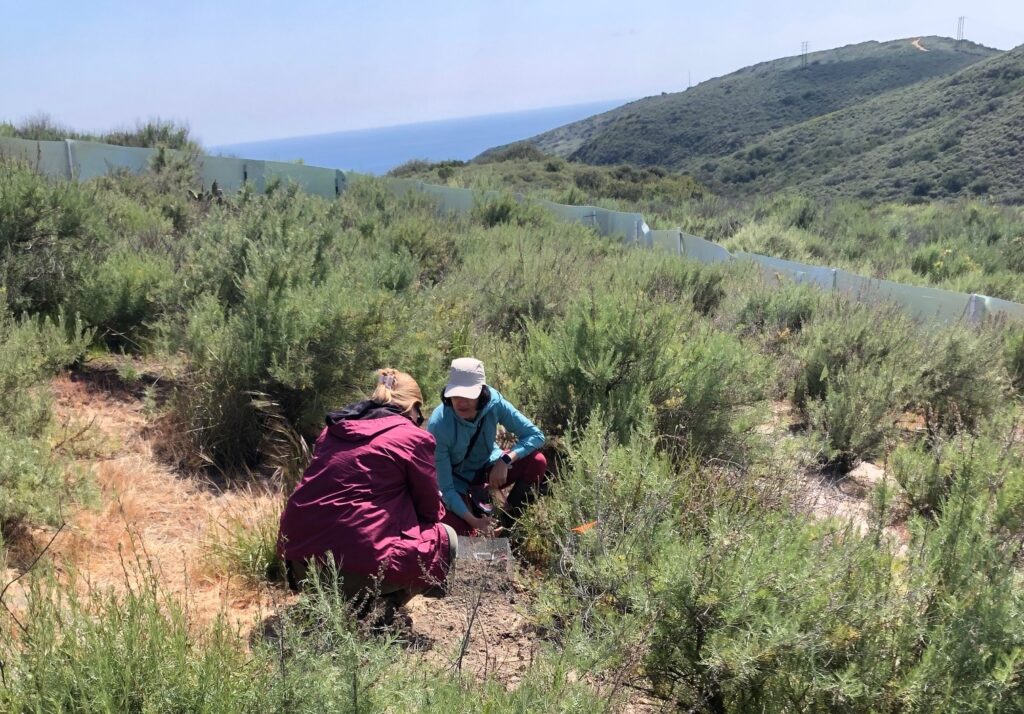
The level of scientific effort and the number numerous topics that go into captive breeding and reintroduction of a species is daunting. For example, on our second day we got a full presentation on the history of the program, followed by explanations and examples of husbandry, breeding decisions, hormone trials, genetic studies, and health assessments. We ended the day with an example of one of their behavioral competency assessments – snake training! That’s right, they teach these tiny mice to be afraid of snakes, in this case a lovely and very patient California king snake. There is a LOT that goes into this work.
The next day started off with a tour of the Harter Veterinary Hospital, which was awe inspiring. I’m usually not that impressed with buildings, but this was almost certainly the best vet building in the world, and even 20 years after its construction it is still mind-boggling in terms ofpurposeful design. Doors specifically designed to channel animals like zebra and antelope down halls and into rooms, the ability to provide drugs via IV from the hallway, hallway doors that can move down the hallway to move recalcitrant animals – the list of clever designs felt endless.
This was followed by two hours of presentation and discussion on genetics and genetic management, which was also nearly as impressive as the vet hospital. We ended with more behavioral competency work (i.e., mouse lessons) – these on shelter use and foraging. They really don’t want those mice to be released without knowing how to survive in the wild!
The next day we went back out to the site for vegetation surveys and supplemental feeding of the mice that had been ‘soft released’ into the caged burrow systems. It was just a joy to be out in the sage scrub, which is scented with lovely odors of California sagebrush and many other plants, the sun on our backs and everything from California quail to roadrunners wondering what we were doing out there.
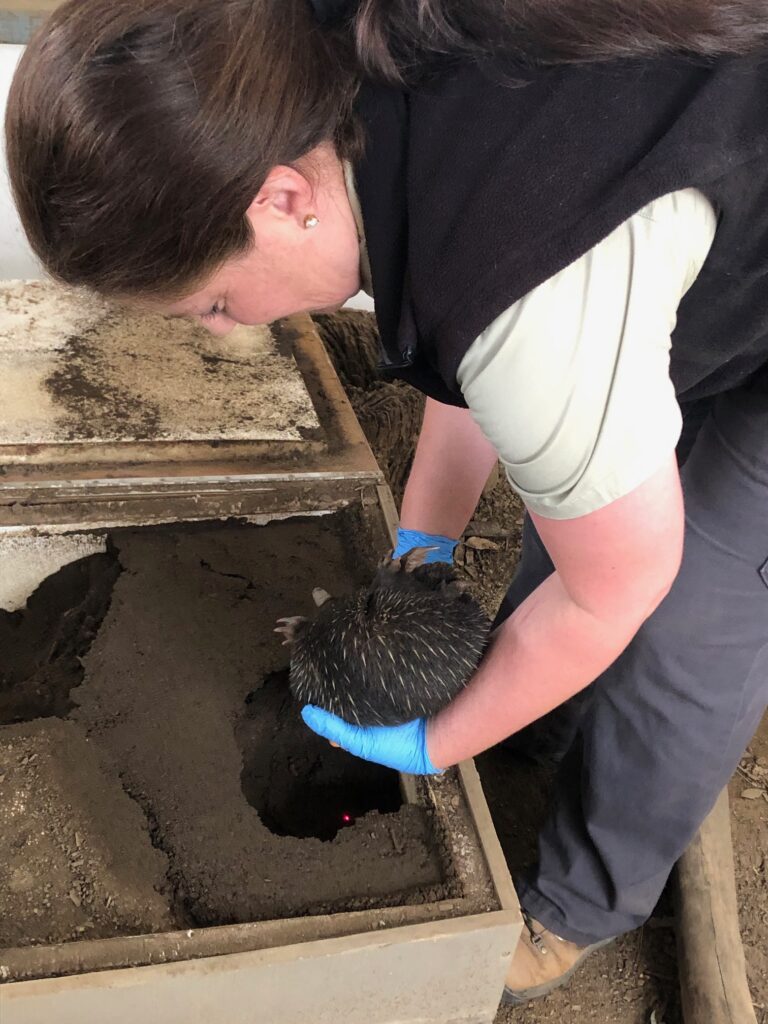
The next day was Friday, and we started with an ‘insider’ tour of the Wild Animal Park, which meant we got to meet a range of species none of us had interacted with before. That included the platypus, which is just as charming as you might imagine. We also got to meet the platypus’s close relative, the spiny echidna. Like the platypus it is a monotreme, which means that despite it being a mammal it lays eggs! We also met a baby echidna (well, more like a tween), which are not only very cute but have the nerve to be called “puggles.” Seriously.
This was followed by a series of talks and conversations, the first on their wildly successful Stephens’ kangaroo rat project (a large relative of the pocket mouse), which was a great example of using science to solve real-world problems and bring a highly endangered species back from the brink of extinction. We also learned about the very complicated process of deciding where to reintroduce pocket mice. With so little coastal sage scrub habitat left, and with those fragments still under threat, and with Pacific pocket mice so narrowly focused on specific kinds of soil and vegetation, it’s not an easy process! In fact, for reasons that are still not fully understood, PPMs are never found more than four miles from the coast. I like to think of them as SoCal real estate snobs, but going up against millionaire human beings is not a great plan for the continent’s smallest and perhaps rarest rodent.
With two days ‘off’ over the weekend, of course we went to the zoo! Howeveras VIPs of a sort, we got special treatment, and got to go behind the scenes at various locations such as the elephants and the bear enclosures (brown, sloth, sun, Andean, and polar bears – and even the giant pandas). Sunday we went on a whale watching trip, where we did not see big whales but did spend some time with a pod of many hundreds – perhaps a thousand – common dolphin, from right next to the boat seemingly extending to the horizon, as they turned what must have been a very large school of anchovies to chum to the delight of both the people in the boat and many sea birds fighting for scraps.
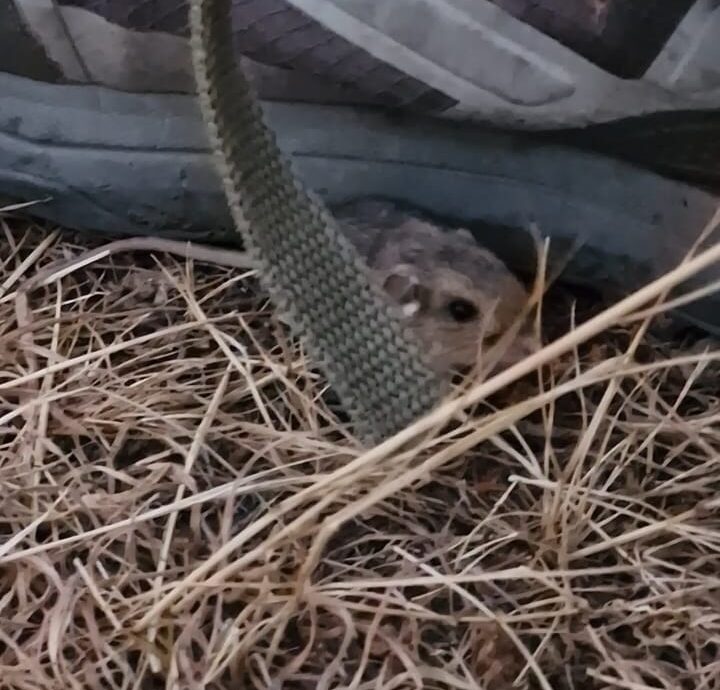
Monday we had the “day” off, but at 6 pm we met back up at the field site to release the PPMs into the wild for real. It was a bit anti-climactic, as it mostly involved pulling the small wire cages off. But knowing that this meant that 50 more Pacific pocket mice – perhaps 20% of the wild population – were now back in the wild was truly uplifting.
So hat’s off and a standing ovation for the hard-working and quite brilliant scientist/ conservationists of the San Diego Zoo Wildlife Alliance for all their struggles bringing back some of the most threatened wildlife in the world. And best of luck to our Ukrainian colleagues, who thoroughly enjoyed the entire experience, and now get to apply what they’ve learned to their equally impressive efforts to save the Critically Endangered European hamster.
